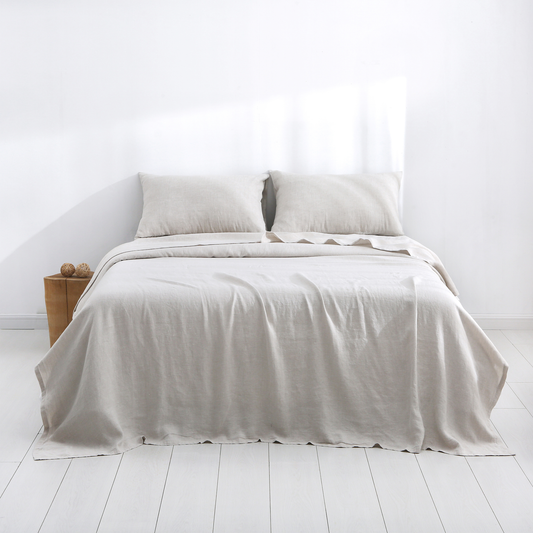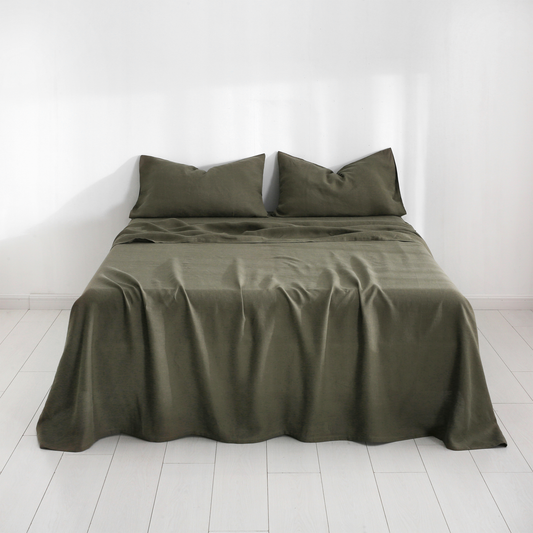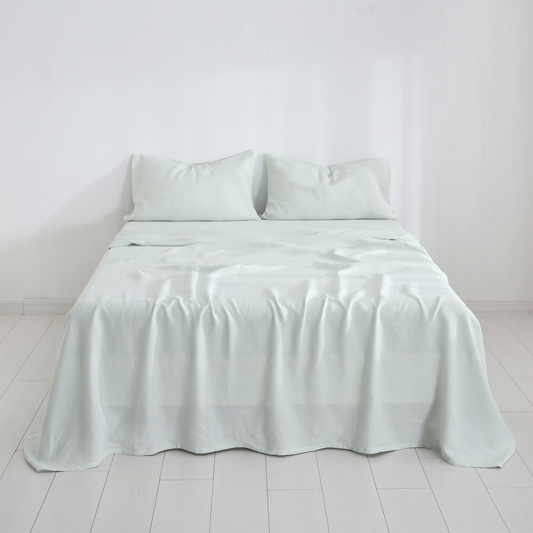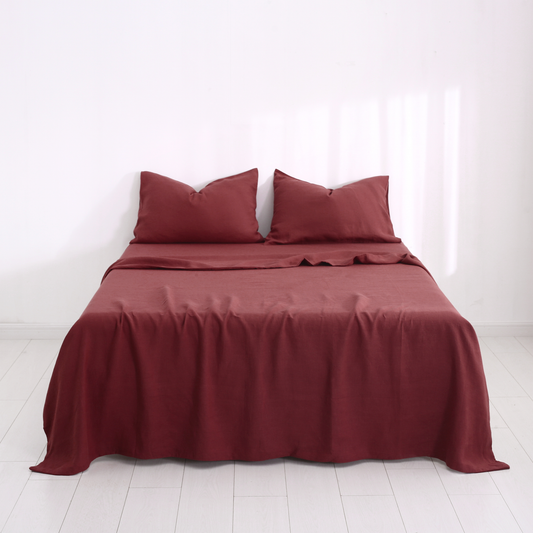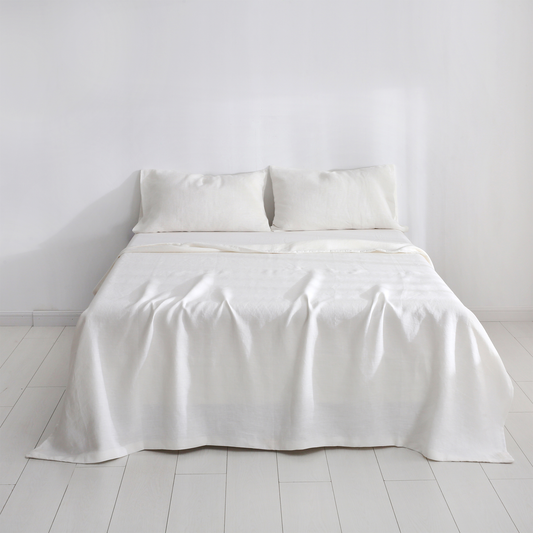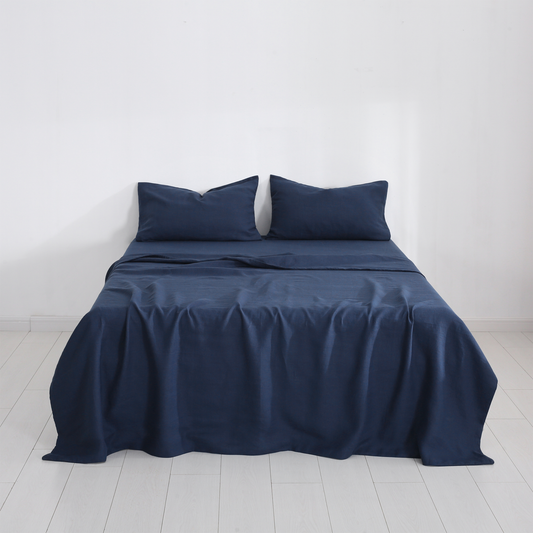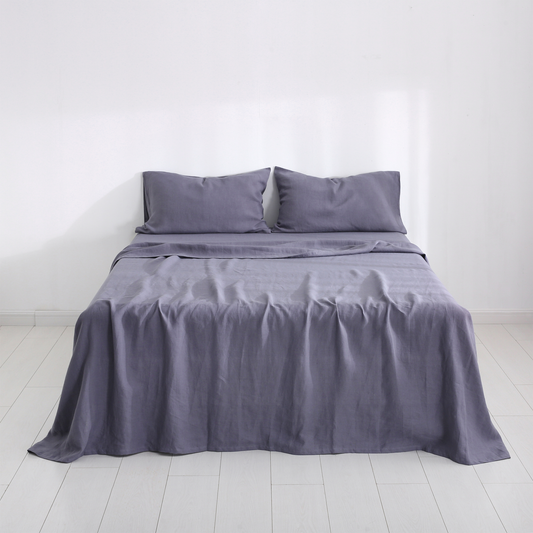Bed linens have been around for centuries, with evidence of woven fabrics used for sleeping dating back to ancient civilizations.
Some of the earliest known examples of bed linens have been found in ancient Egypt, where linen and hemp were popular materials for bedding.
In the past, bed sheets were often made from natural materials such as linen, hemp, bamboo, cotton, or wool and were hand-woven on a loom. However, as technology advanced, bedding linen became more mass-produced and widely available, with various materials and styles.
Linen
Linen is a natural fibre made from the stems of the flax plant, and it was used in ancient Egypt for a variety of purposes, including making clothing, towels, and bedding. Other ancient civilizations, such as the Greeks and Romans, also used linen for bedding, as well as other natural materials such as wool and cotton.
While generally considered more sustainable and eco-friendly than other materials such as cotton or bamboo, Linen farming can still negatively impact the environment and local communities from water pollution and the use of harmful chemicals in processing. Additionally, linen production tends to have a low yield per square kilometre compared to hemp, requiring more significant amounts of land and resources to produce the same amount of fibre.
Cotton
One of the most popular materials for bed linens today is cotton, known for its softness and durability. Cotton is a natural fibre grown and harvested from the cotton plant, and it has been used for centuries to make various textiles. However, growing and harvesting cotton can be resource-intensive and environmentally damaging, requiring large amounts of water and pesticides.
Throughout history, cotton farming has had negative impacts on marginalized communities in various countries around the world. The environmental impact and commercial practices of cotton production, such as using harmful pesticides and exploiting cheap labour, have often resulted in the degradation of natural resources, pollution of water sources, and exploitation of workers, particularly in developing countries. These impacts have persisted for centuries, highlighting the need for more sustainable and ethical alternatives to traditional cotton production.
Hemp
Hemp has been used as a source of fibre for thousands of years, with evidence of hemp textiles dating back to ancient civilizations in Asia and Europe. In ancient China, hemp was used to make various products, including bedding and clothing. In ancient Europe, hemp was also used for many purposes, including making ropes and sails for ships.
We have blogged before about the impact people's misconceptions and the commonwealths attempts to demonise hemp stalled the evolution of the fibre. Taking one of the the largest natural resources Asia had and making illegal in most countries, ensuring their cotton businesses were market leaders...
Considering Hemp is a more sustainable and eco-friendly option for bed linens.
Hemp requires much less water and pesticides to grow compared to cotton, and it is also a renewable resource that can be grown year after year.
In addition to being environmentally friendly, hemp bed linens are also known for their comfort and durability.
Hemp fibres are naturally soft and hypoallergenic, making them an excellent choice for people with sensitive skin or allergies. Hemp bedding is also resistant to stains and odours, making it easy to care for and maintain. Hemps Durability make them the perfect long term investment for your bedding needs, as they soften and evolve with every wash.
Hemp Hero of the future in Bed Sheeting
Overall, the history of bed linens is long and varied, with many different materials and techniques used throughout the centuries. While cotton is a popular choice, hemp bed linens offer a more sustainable option for a good night's sleep.
So if you're in the market for new bedding, consider switching to Jo Dope hemp bed linens for a more eco-friendly and comfortable sleep experience.


